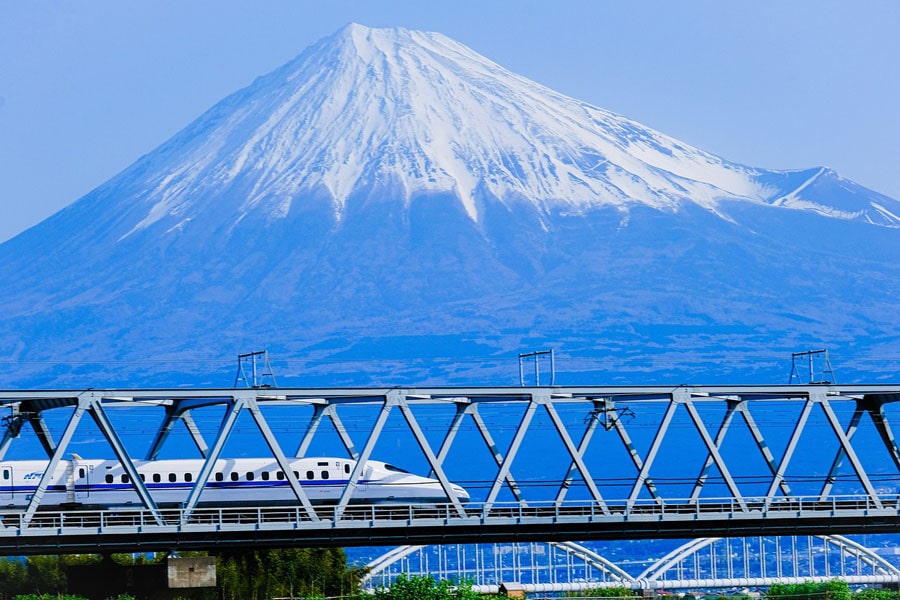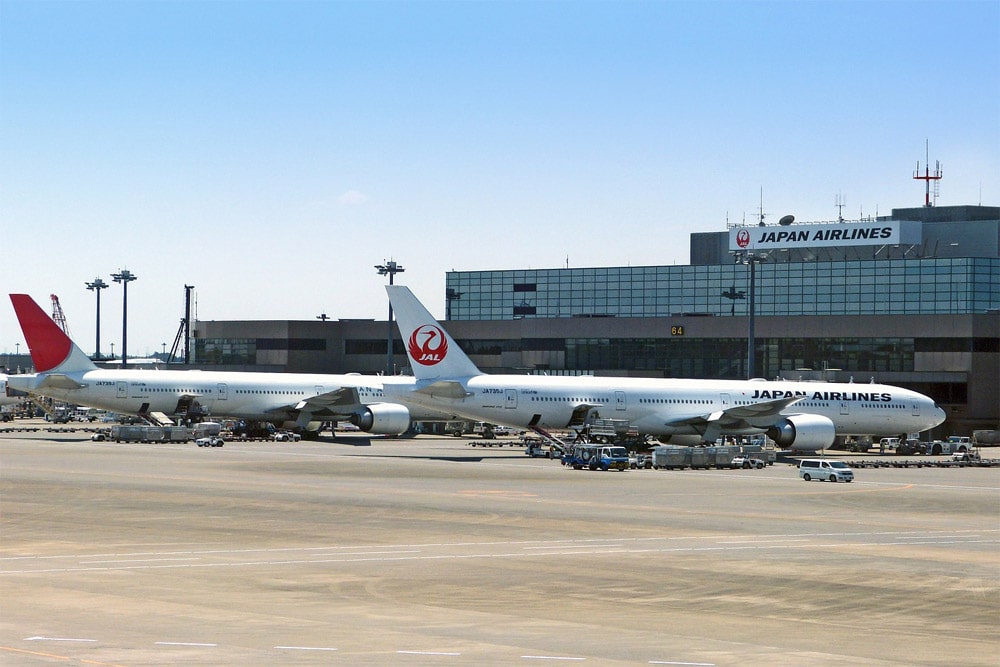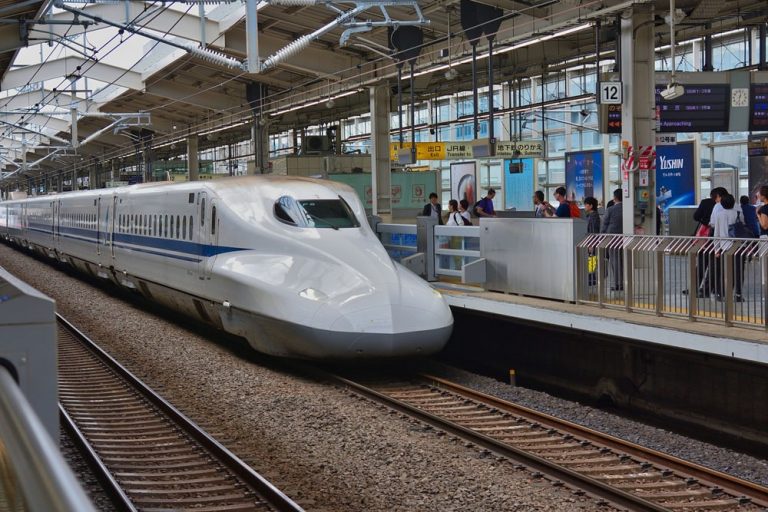
Japan’s train system is one of the most efficient, reliable, and extensive in the world. Whether you’re gliding across the countryside on the famous Shinkansen or hopping between city neighborhoods on a local line, trains are the best way to explore Japan. Here’s everything you need to know about navigating Japan’s rail network like a local.
Understanding Japan’s Train System
Japan’s rail network is vast and consists of Japan Rail (JR) lines and a variety of private railway companies. Together, they connect nearly every corner of the country — from rural Hokkaido to the southern islands of Kyushu.
The largest operator in Japan is Japan Rail (JR), with six regional branches (JR East, JR Central, JR West, JR Kyushu, JR Shikoku, and JR Hokkaido). JR runs most long-distance and regional routes, including the Shinkansen bullet trains. The benefit of using JR Trains is that JR lines are covered by the JR Pass, a tourist-only pass that enables the holder unlimited train travel for a fixed period of 7,14, or 21 consecutive days.
Private railways further help connect the country where the JR Lines sometimes don’t service. Companies like Tobu, Keio, Odakyu, and Hankyu operate regional and suburban lines, often connecting major cities with nearby attractions or theme parks.
Subways are found mainly in big cities like Tokyo, Osaka, and Kyoto. Subway lines make getting around urban areas quick and convenient. Subways operate much like private railways and typically don’t accept the JR Pass as a means of payment.
Understanding which train you need to take is very important, as each operator may depart from a different station or part of the station, and getting on a JR Train instead of a Subway could lead you to head in the wrong direction. It’s also important for payments, as non JR Lines aren’t covered by the JR Pass, leaving the rider to cover the bill.
Getting a ticket

There are several ways to buy tickets, depending on the distance and type of train:
Ticket Machines can be found in almost all stations. These machines offer English options and accept cash or IC cards. For simple journeys, just select your destination and pay the fare displayed. You can also find Ticket Counters (Midori no Madoguchi) available at major JR stations, which are perfect for booking Shinkansen or limited express tickets with assistance from the rail staff.
IC Cards are the easiest way to travel outside of the Japan Rail Pass. IC Cards are prepaid smart cards like Suica, Pasmo, and Icoca that let you tap in and out at stations across Japan, automatically deducting the correct fare. These cards can also be used on buses, vending machines, and convenience stores.
If you’re doing multiple long-distance trips, consider a Japan Rail Pass or regional passes like the JR East Pass or Kansai Wide Area Pass. They offer unlimited travel for a set period and can save you a lot of money. Simply insert your JR Pass into the ticket gate and walk through – just make sure you are at a JR Station.
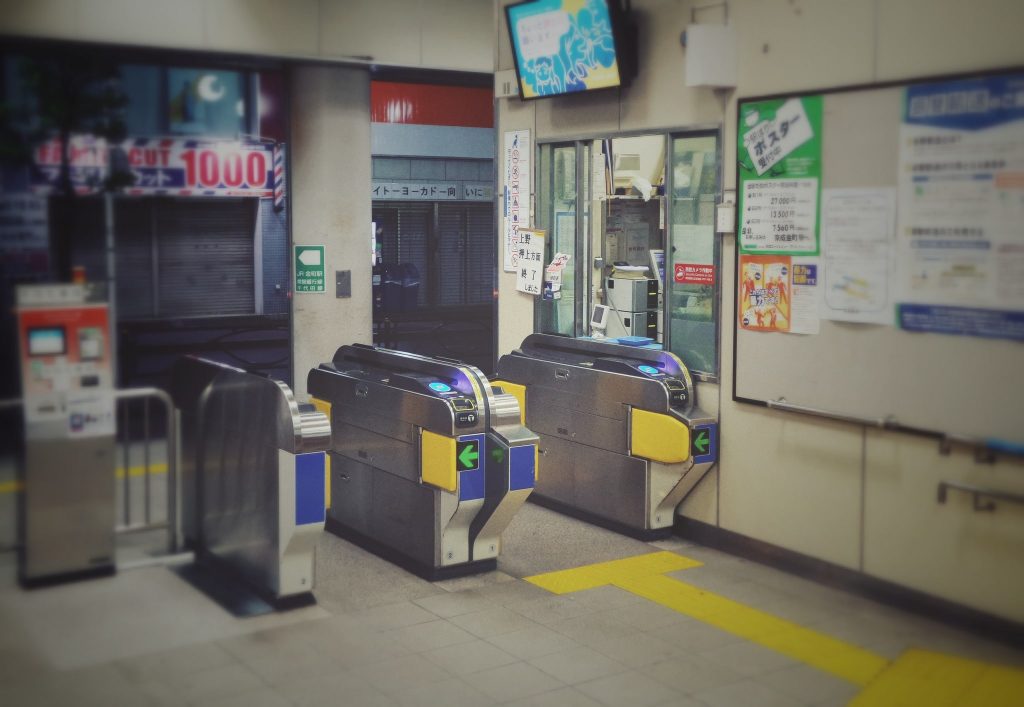
Ticket gates separate you from trackside and landside. Simply insert your ticket, JR Pass, or swipe your IC Card on the ‘IC’ Spot on the reader. The gate will open automatically. If you have a paper ticket or JR Pass, make sure you collect your ticket as you pass through.
At the end of your trip, simply insert your ticket back into the gate – this time, the machine will hold it and not return it. If there is an error with your ticket, for example, you didn’t select the right fare when you bought the ticket, or your IC Card is out of balance, then you may have to go to a fare adjustment station to correct your ticket. Station staff will be on hand if you need assistance.
Find your trains departure time

Trains in Japan are usually very punctual, so make sure you arrive at the station early and check the train schedule. You can find train schedules at the station or on the train company’s website.
Using a digital service like Google or Apple Maps is a easy and familiar way for most to find when and where the train departs from, and gives you a degree of assurance that the train you get on will take you where you want to go. If you haven’t used either of those services, then try them out in Japan for a super easy train network experience.
Find the right platform

In a large train station, it can be a little overwhelming trying to figure out where you need to be at what time. There are large electronic departure boards at most major stations, which indicate upcoming departures from what platform.
On each platform, you will usually see a smaller version of these boards as well, which indicate next departures for that platform. Make sure you are watching this board closely to make sure you are getting on the right train at the right time.
If you are unsure, the train station staff are more than happy to assist and get you on the right train.
Japan often has good Google Maps and Apple Maps data available. In most cases among the large rail operators, the departure platform will be displayed in the Google Maps journey planner, which helps greatly when navigating the station.
Waiting for the train
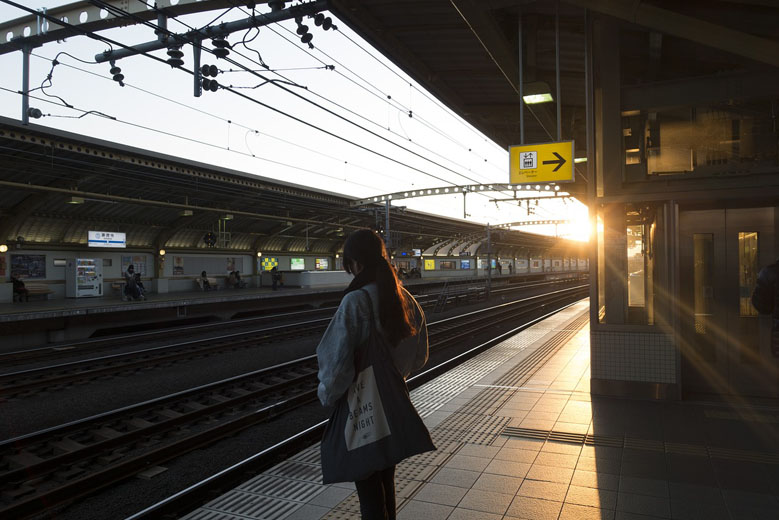
While waiting for the train, it’s best to stand at the markings on the ground that indicate the stopping positions for the cars. The trains in Japan are so precise, that they have floor markings which indicate where the doors will be when the train pulls into the station. While not perfect all the time, the conductors are usually very accurate with their stopping. Queuing in this area creates easy flow for those boarding, and alighting at each station.
At the busy train stations of Japan, queuing in the right place at the right time is important, as with busy crowds, it’s very easy to bump into other people, get on the wrong train, or get lost.
Stepping on the train
Once your train has arrived, wait for passengers to disembark before stepping on to the train. This allows for a safe, and efficient flow of passengers on and off the train. Stand in line, and wait to board the train. After no one is clearly getting off, then feel free to board.
Train Etiquette
Train etiquette is essential in Japan, and deserves its own article in its own right. For more information on Japanese train etiquette, click here.
Explore Japan
Top Travel Tips
Japan Rail Pass | Travel Tips
Unlock Japan with the Japan Rail Pass
Where to Store Luggage in Japan
Your guide to travelling Japan unincumbered
Cycling in Japan – What you might want to know
General rules of thumb for cycling in Japan
Frequently Asked Questions About Japan
Most commonly asked questions
2 Days in Kyoto – Kyoto Itinerary
Ideas for your 2-day trip to Kyoto
More Travel Tips
Japan Rail Pass | Travel Tips
Unlock Japan with the Japan Rail Pass
Where to Store Luggage in Japan
Your guide to travelling Japan unincumbered
Cycling in Japan – What you might want to know
General rules of thumb for cycling in Japan
Frequently Asked Questions About Japan
Most commonly asked questions
2 Days in Kyoto – Kyoto Itinerary
Ideas for your 2-day trip to Kyoto
Getting to Japan – International Airports | Travel Tips
Your guide to Japan's major airports

